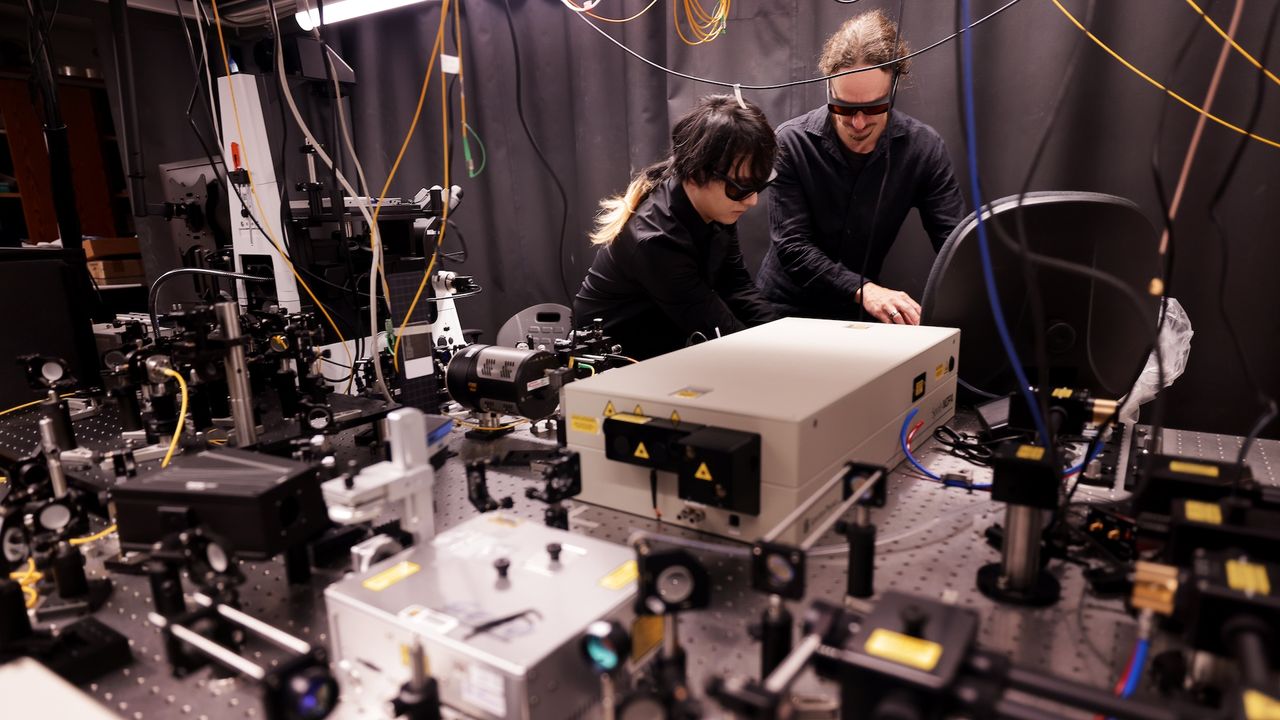
Researchers have developed a breakthrough technology that solves a fundamental limit in electronics.
This new technology, dubbed an “optoexcitonic switch,” could lead to a new class of electronics — ranging from phones and PCs to data centers and quantum computers that can operate at without generating waste heat.
The new switch works like a conventional electronic switch, which uses an electrical charge to control the flow of electrons in a system. Switches direct the flow of energy or control the transmission of signals in a device.
Because these electrons are charged, they produce “waste heat.” This is why your laptop gets hot when you play a demanding video game and why massive data centers operate at extraordinarily high temperatures.
The new “excitonic switches,” on the other hand, rely on neutrally charged “excitons” — a class of quasiparticles created by “exciting” an electron in such a way that it’s removed from its position within an atom.
These excited electrons leave behind a hole that binds with the free electron. Together, the free-moving electron, which now has a negative charge, and the hole it leaves behind, which has a positive charge, form a single quasiparticle called an “exciton” that remains neutrally charged. As excitons have a neutral charge, they don’t produce heat when they transfer information.
The power of light
The breakthrough research, published Aug. 31 in the journal ACS Nano, is the first time excitons have been used to create a switch that exceeds the performance of current photonic switches and achieves overall state-of-the-art performance.
“Electronics get hot, and that’s because electronic devices always have capacitors,” study co-author Parag Deotore, associate professor electrical engineering, computer engineering, and applied physics, told Live Science. “Every time you store energy or you release that energy, you heat it up. An exciton is a new charge-neutral particle, like a photon, that doesn’t produce this heat.”
The new device uses excitons to overcome the heat problem and improves on the electronic design by shrinking the switches used to move information by two orders of magnitude.
Deotore said the long-term goal in developing these new switches is to create excitonic circuits that function so efficiently that computer systems don’t need fans and that phones can keep their batteries charged for far longer periods of time.
Testing the ‘magical thickness’
While the theory behind excitonic switches is sound, engineering and testing the new technology presented the biggest challenge for the team. In a conventional electronic system, electrons are pushed where they need to go through a brute-force electrical charge. Excitons lack this option because of their neutral charge.
To get excitons to go where they need to go, the scientists used similarly neutrally charged photons to order the excitons in a linear array along a one-dimensional plane — or “ridge.”
The team created the excitons, then affected them with a specific number of photons, which were absorbed at the tip of the ridge to create an exciton population, Deotore said. In other words, this is a crowd of excitons bunched up and standing still at the bottom of a straight line. The team then applied more photons until the excitons began to move. If they added too many photons, the excitons failed to follow the ridge; too few photons caused the excitons to remain still.
“Our prediction was that if you grow them thick enough, the light coupling to excitons will be such that the push is going to be destroyed. And they could show it. So basically, it had to have a magical thickness,” study co-author Mackillo Kira, a professor of electrical and computer engineering, and the co-director of the university’s Quantum Research Institute, told Live Science.”
Because light acts as a wave, the photons “pushed” the excitons once that magical thickness was achieved. Observing this activity confirmed the theories and proved that the experiment was a success, Kira added. “That’s actually easy to verify for experiments, because the color of the exciton will change as you go along the ridge, Kira said.
Based on the results of the experiment, the switch already meets or exceeds the capabilities of current technology.
The ultimate goal is to scale these switches into circuits that would, ostensibly, replace current electronics. According to the researchers, several advances are necessary to reach that goal, including finding new materials and developing techniques to fabricate and scale the prototype devices used in the team’s experiments. But the team believes these challenges could be overcome in a matter of decades.
The hope is that optoexcitonic switches and circuits could overcome waste heat — arguably the biggest problem in computing. This would enable massive reductions in size coupled with exponential improvements in performance, the scientists said.


1 Comment
https://shorturl.fm/NPmeX